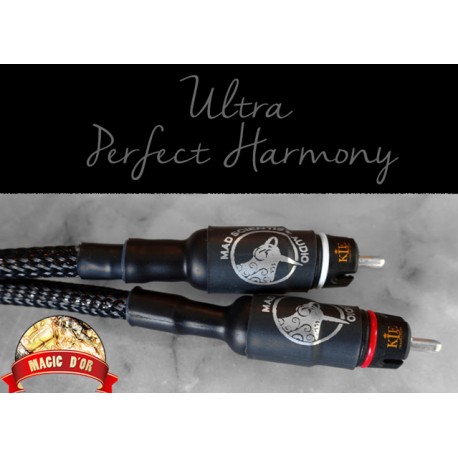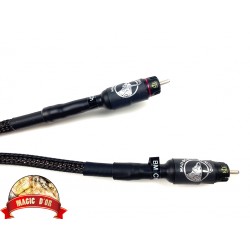No products
Prices are tax included
Mad Scientist Flexible Carbon/Graphene Interconnects are a completely new development, unrelated to the HAC and HAC+, using a new flexible carbon fiber and a host of new construction techniques.
-
We are offering two models of interconnect:
1) Flexible Carbon/Graphene (FCG) - this one uses the new flexible fiber along with new construction techniques designed to cancel RF interference. Graphene is used at the metal/carbon junctions. This interconnect supersedes and replaces our HAC+ model.
2) Flexible Carbon/Graphene PLUS (FCG+) - same construction as above but this one uses graphene treatment along the whole length. This is our best interconnect. -
Needless to say but the graphene treated version sounds a lot better. However, the non-graphene version is no slouch, easily outperforming the HAC+.
Using carbon fibers as the signal conductor has some beneficial effects:
Resistance : these cables have around 20 ohms of resistance. In the digital version, this resistance helps remove the reflections that occur. A reflection that bounces off the DAC's input socket will travel the length of the cable and back again, thus experiencing around 75 ohms of resistance. But in an analog cable, such reflections are not important. Or are they? The normal answer is no - the frequencies involved are not high enough. But I'm not so sure anymore. It's possible that you have RF interference and noise at the kind of frequencies that do matter, and it seems likely that they could reflect up and down the wire. Something must account for why these cables sound so much better.
But surely you want to have ultra low resistance for an interconnect? If you read and believe the marketing that goes with many silver cables, you'd think that low resistance was an essential part of a good interconnect. Sorry but it's not. Just about every device used to send audio down an interconnect has an output impedance of several hundred ohms. This means that it's effectively an ideal source with a resistor in line. Often that is how it is implemented. I'm not saying that silver wire can't sound good - it can - but I doubt that low resistance is the key to this. (In fact, due to it's lower resistance, silver wire has a thinner skin depth than copper wire).
Skin Effect is clearly important for digital cables, as the harmonics of the square waves go up to the 100MHz range and higher. There has been a lot of argument about whether this is important at audio frequencies. Using simple (or maybe simplistic) math shows that skin effect should have negligible impact at audio frequencies. On the other hand, listening critically to various wire thicknesses you get strong correlation between treble performance and wire gauge. The best treble seems to come from wire that is 20awg or thinner. (Note : HAC uses 29awg wire for ground return). But note I said wire. All metals used for wire, e.g. copper, silver, etc., have similar skin depths. But carbon fibers are different - because of their permittivity and resistance, the skin depth is much more, so the fiber or bundle of fibers is much smaller than the skin depth.
But frankly, the reason we use Carbon Fibers for the conductor is because it sounds great, better then any wire I've tried.






